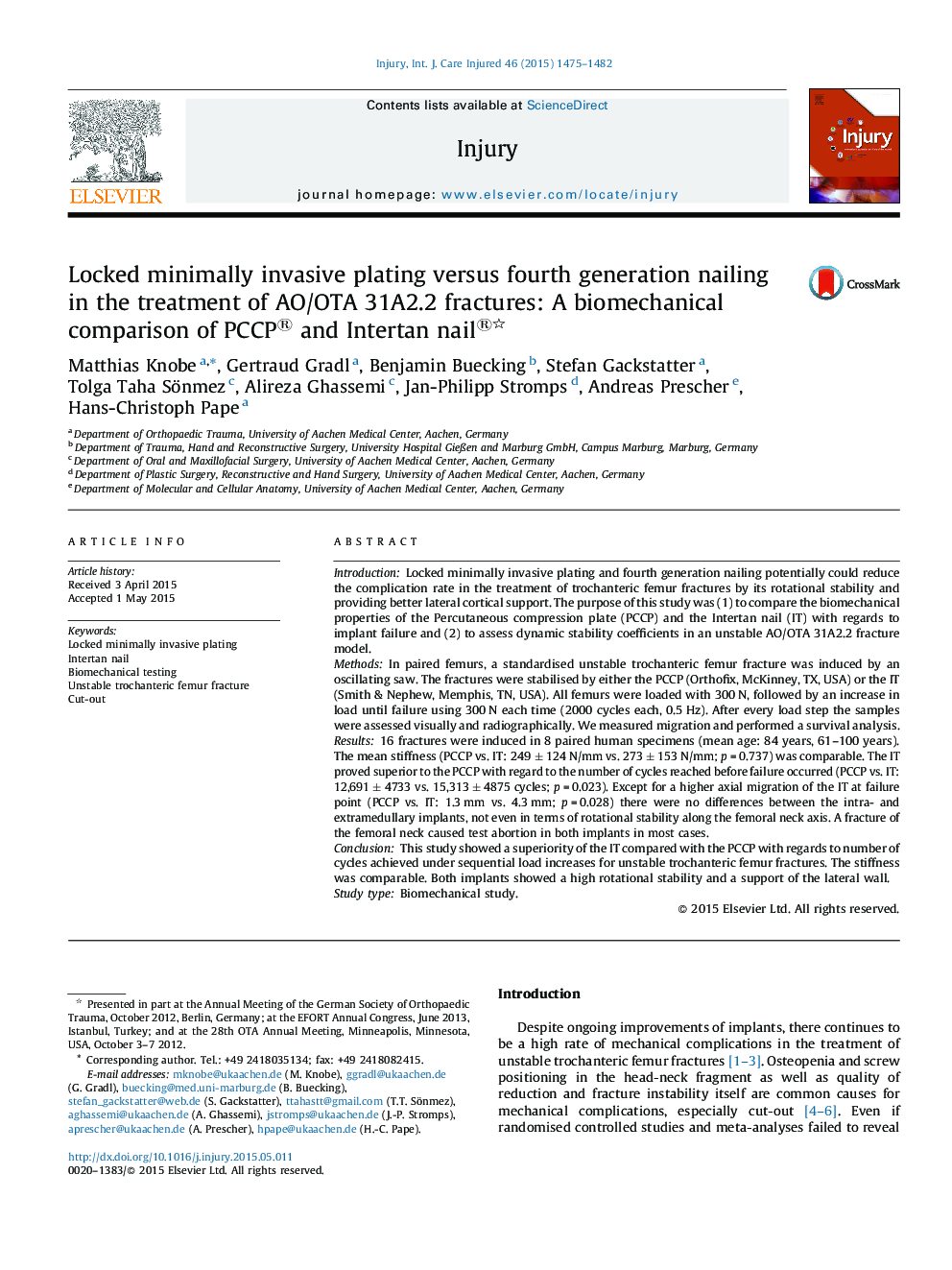| کد مقاله | کد نشریه | سال انتشار | مقاله انگلیسی | نسخه تمام متن |
|---|---|---|---|---|
| 3238884 | 1205976 | 2015 | 8 صفحه PDF | دانلود رایگان |

IntroductionLocked minimally invasive plating and fourth generation nailing potentially could reduce the complication rate in the treatment of trochanteric femur fractures by its rotational stability and providing better lateral cortical support. The purpose of this study was (1) to compare the biomechanical properties of the Percutaneous compression plate (PCCP) and the Intertan nail (IT) with regards to implant failure and (2) to assess dynamic stability coefficients in an unstable AO/OTA 31A2.2 fracture model.MethodsIn paired femurs, a standardised unstable trochanteric femur fracture was induced by an oscillating saw. The fractures were stabilised by either the PCCP (Orthofix, McKinney, TX, USA) or the IT (Smith & Nephew, Memphis, TN, USA). All femurs were loaded with 300 N, followed by an increase in load until failure using 300 N each time (2000 cycles each, 0.5 Hz). After every load step the samples were assessed visually and radiographically. We measured migration and performed a survival analysis.Results16 fractures were induced in 8 paired human specimens (mean age: 84 years, 61–100 years). The mean stiffness (PCCP vs. IT: 249 ± 124 N/mm vs. 273 ± 153 N/mm; p = 0.737) was comparable. The IT proved superior to the PCCP with regard to the number of cycles reached before failure occurred (PCCP vs. IT: 12,691 ± 4733 vs. 15,313 ± 4875 cycles; p = 0.023). Except for a higher axial migration of the IT at failure point (PCCP vs. IT: 1.3 mm vs. 4.3 mm; p = 0.028) there were no differences between the intra- and extramedullary implants, not even in terms of rotational stability along the femoral neck axis. A fracture of the femoral neck caused test abortion in both implants in most cases.ConclusionThis study showed a superiority of the IT compared with the PCCP with regards to number of cycles achieved under sequential load increases for unstable trochanteric femur fractures. The stiffness was comparable. Both implants showed a high rotational stability and a support of the lateral wall.Study typeBiomechanical study.
Journal: Injury - Volume 46, Issue 8, August 2015, Pages 1475–1482